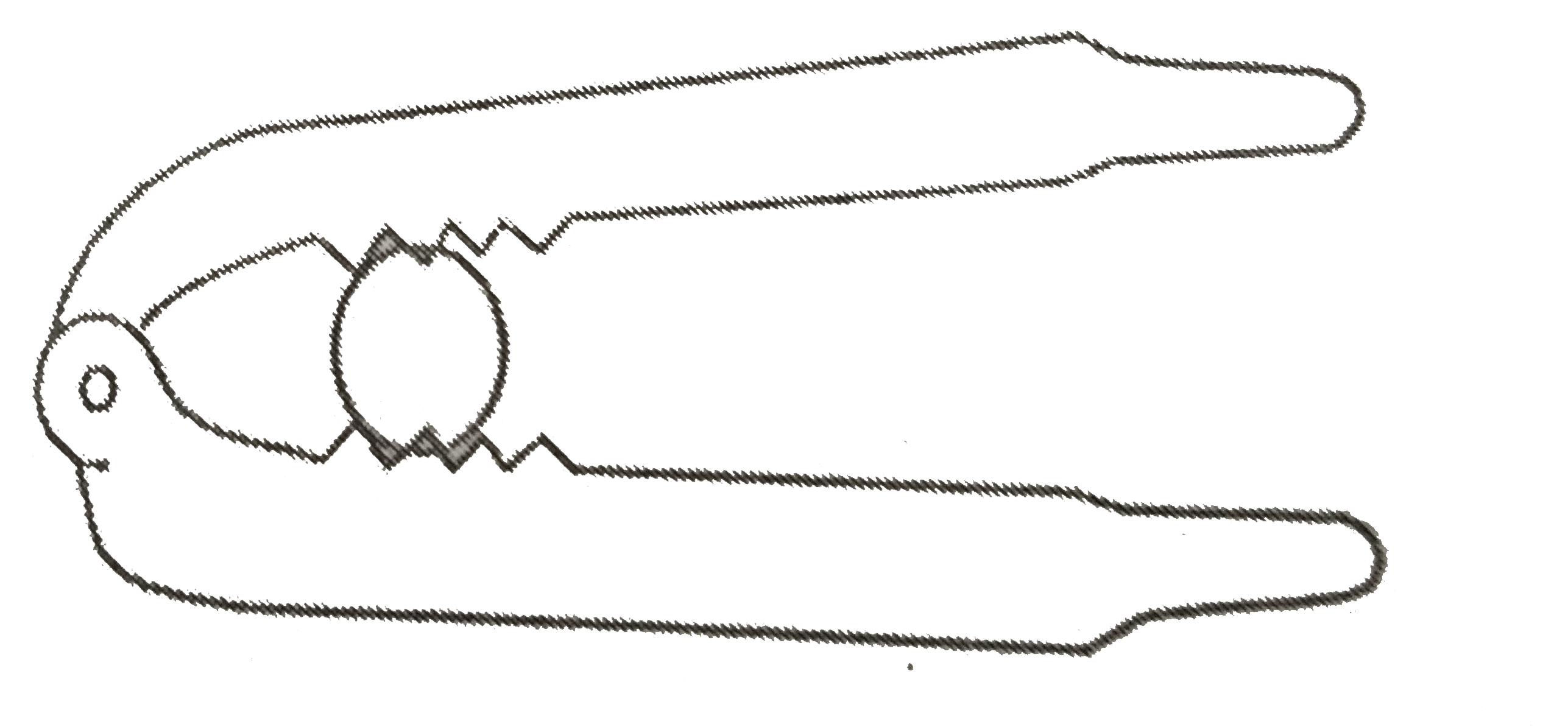A mechanic unscrews a nut by applying a force of 120 N on a spanner of length 40 cm. What should be the required length of the spanner in order to apply only 40 N force ?
To solve the problem, we need to find the required length of the spanner when a force of 40 N is applied, given that a force of 120 N is applied with a spanner of length 40 cm.
1. Understand the Concept of Torque:
Torque (τ) is defined as the product of the force (F) applied and the distance (r) from the pivot point (length of the spanner). The formula for torque is:
τ=F×r
2. Calculate the Torque for the First Case:
In the first case, the force applied is 120 N and the length of the spanner is 40 cm (which we convert to meters):
r1=40cm=0.40m
Now, calculate the torque:
τ1=F1×r1=120N×0.40m=48N m
3. Set Up the Equation for the Second Case:
In the second case, we want to apply a force of 40 N. Let the required length of the spanner be r2. The torque in this case must be equal to the torque in the first case:
τ2=F2×r2
Therefore, we have:
48N m=40N×r2
4. Solve for r2:
Rearranging the equation to find r2:
r2=48N m40N=1.2m
5. Conclusion:
The required length of the spanner to apply a force of 40 N is 1.2 meters.
Final Answer:
The required length of the spanner is 1.2 meters.
Torque (τ) is defined as the product of the force (F) applied and the distance (r) from the pivot point (length of the spanner). The formula for torque is:
τ=F×r
In the first case, the force applied is 120 N and the length of the spanner is 40 cm (which we convert to meters):
r1=40cm=0.40m
Now, calculate the torque:
τ1=F1×r1=120N×0.40m=48N m
In the second case, we want to apply a force of 40 N. Let the required length of the spanner be r2. The torque in this case must be equal to the torque in the first case:
τ2=F2×r2
Therefore, we have:
48N m=40N×r2
Rearranging the equation to find r2:
r2=48N m40N=1.2m
The required length of the spanner to apply a force of 40 N is 1.2 meters.
The required length of the spanner is 1.2 meters.
Topper's Solved these Questions
- BOOK - PEARSON IIT JEE FOUNDATIONCHAPTER - SIMPLE MACHINESEXERCISE - Very Short Answer Type Questions30videos
SIMPLE MACHINES
- BOOK - PEARSON IIT JEE FOUNDATIONCHAPTER - SIMPLE MACHINESEXERCISE - Short Answer Type Questions13videos
SIMPLE MACHINES
- BOOK - PEARSON IIT JEE FOUNDATIONCHAPTER - MODERN PHYSICSEXERCISE - Level 35videos
MODERN PHYSICS
- BOOK - PEARSON IIT JEE FOUNDATIONCHAPTER - WAVES MOTION AND SOUND EXERCISE - Level 310videos
WAVES MOTION AND SOUND
Similar Questions
A mechanic can loosen a nut by applying a 150-N force using a spanner of length 40 cm. What is the length of the spanner if he wants to loosen the nut by applying a force of 50 N to produce the same turning effect?
View SolutionTo produce a couple of 20 N m on a disc of radius 10 cm, what is the force to be applied.
View Solution
Knowledge Check
- Question 1 - Select One
A force of 50 N is applied on a nail of area 0.001 sq. cm. Then the thrust is
A50NB100NC0.05ND10N - Question 2 - Select One
A rectangular block of mass 2 kg is to be held against a rough vertical wall by applying a force of 98 N perpendicular to the wall. What is the coefficients of friction if the applied force is the minimum required force?
A0.1B0.15C0.2D0.3 - Question 3 - Select One
When a force is applied along the length of the wire
Athe length of the wire increases but its radius remains the sameBboth the ends of its length increases and radius also increasesClength increases but radius decreasesDboth length and radius decreases
A boy pushes a book by applying a force of 40N. Fin the work done by this force as the book is displaced through 25cm along the path.
View Solution
The maximum force than can be borne by the nut placed in a cracker (shown in the figure) is 200 N. The length of the cracker is 20 cm and the nut is placed at a distance of 15 cm from the free end of the cracker. If a boy can apply a maximum force of 25 N, find whether he can crack the nut. If not, find the length of the extension rod that should be attached to the cracker handle so that the boy can crack the nut.View SolutionMinnimum 1 kpa pressure is required to carry out an activity .A machine which can apply 105 N force is use for this purpose .What should be the maxium area on which this force is required to be applied so that the activity can be carried out ?
View SolutionMinnimum 1 kpa pressure is required to carry out an activity .A machine which can apply 105 N force is use for this purpose .What should be the maxium area on which this force is required to be applied so that the activity can be carried out ?
View SolutionA force of 100 N increases the length of a given wiere by 0.1 mm. Then the force required to increase its length by 0.25 mm is
View Solution

